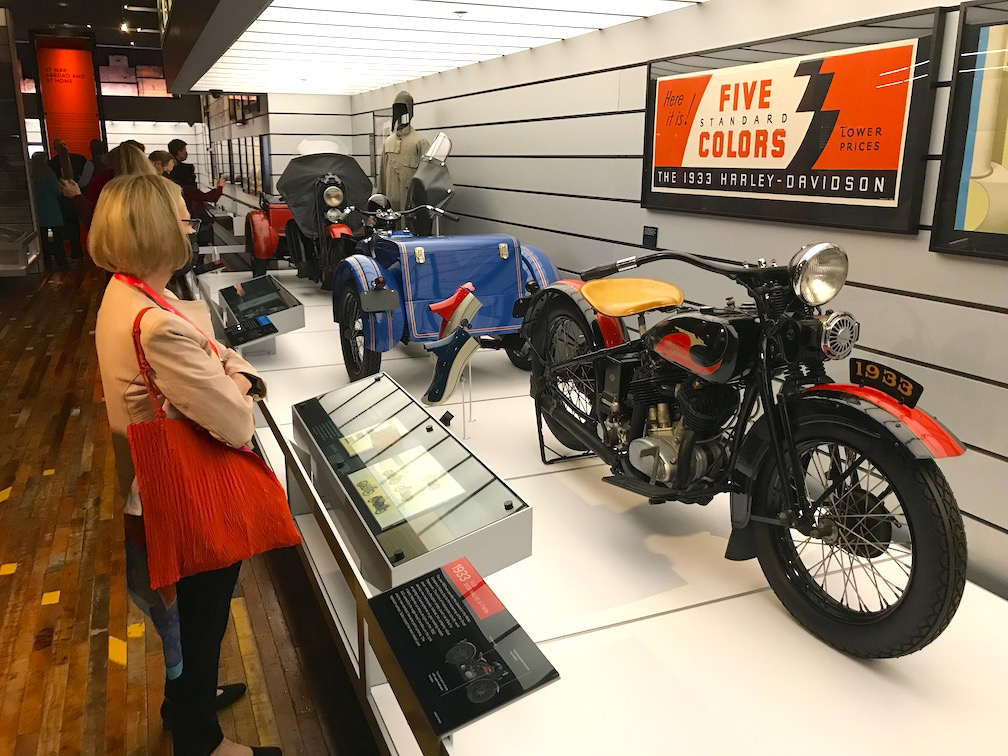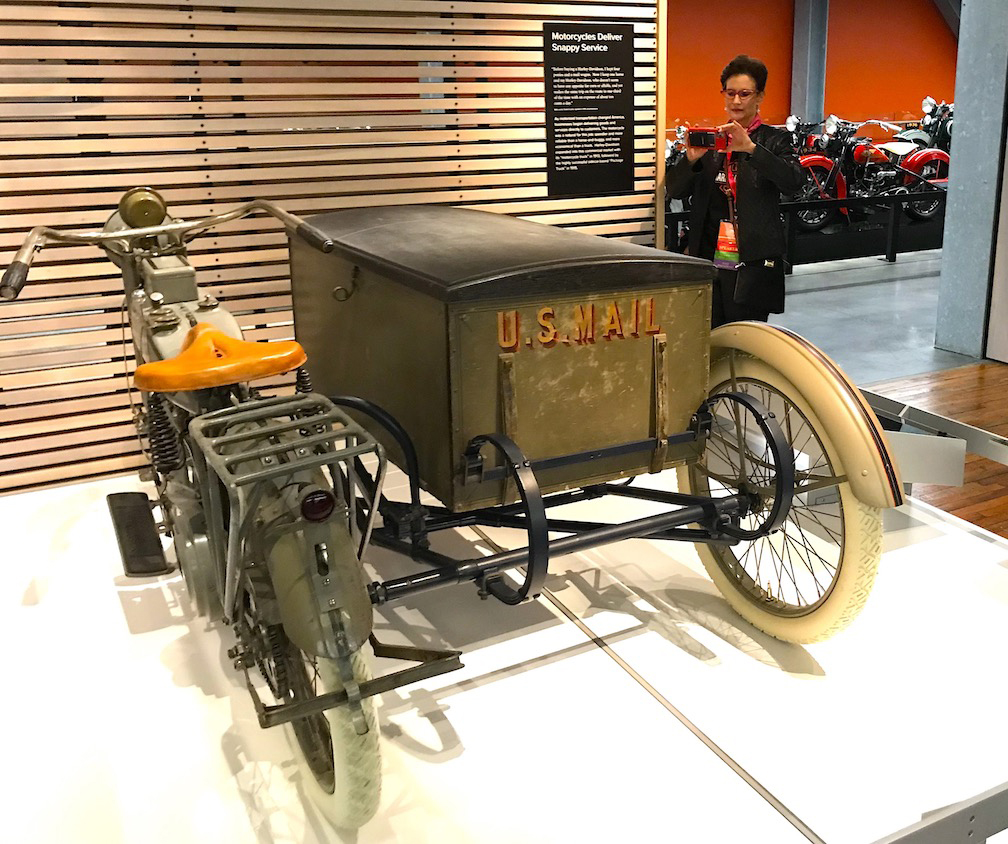| |
‘Get your motor runnin’, head out on the highway’
By Tom Adkinson
July 21, 2022
MILWAUKEE, Wisconsin – ‘Vrooom! Vrooom! Vrrrrooooom!”
You’ll be excused if that sound escapes your lips a time or two at the Harley-Davidson Museum in Milwaukee – even if some parts of the museum seem more like an art gallery than a tribute to roaring machinery.

California sculptor Jeff Decker created this 16-foot-tall, 5,000-pound bronze called “The Hill Climber” for the Harley-Davidson Museum. Image by Tom Adkinson
|
Motorcycle enthusiast or not, this museum devoted to one of America’s best known brands (certainly right up there with Coca-Cola and preceding McDonald’s by decades) can get you excited about two-wheeled adventure.
The brand is so pervasive that the museum draws international visitors to Milwaukee in numbers other cities couldn’t imagine.
The museum is part of a 20-acre campus on the Menomonee River, and it tells the Harley-Davidson story from its start in 1903. What’s surprising is how quickly the company grew.

This belt-driven 1903 Harley-Davidson is the oldest Harley-Davidson known to exist, according to the museum. Image by Tom Adkinson
|
One Harley and three Davidsons (William Harley and Arthur, Walter and William Davidson) created the company in the early 1900s. Harley and Arthur Davidson built their first prototype motorcycle in 1903, and the other two Davidsons joined the fledgling company very soon.
By 1906, they had their first factory and made 50 motorcycles that year. They incorporated in 1907. Production that year was 150 motorcycles.
A museum display about the 1903 model – very much a bicycle with a small engine and a belt drive that snaked around to the rear wheel – shows the first step in the evolutionary tale of Harley-Davidson motorcycles.
Two world wars had a dramatic effect on the young company. The U.S. military bought 20,000 motorcycles from Harley-Davidson in World War I and almost 90,000 in World War II.
Thousands of service members drove them, more learned to work on them and millions of people in scores of countries saw them. Fame and brand identity grew.

This turquoise, ivory and red teardrop-shaped gas tank is among dozens in a special exhibit. Image by Tom Adkinson
|
A trip through the museum shows you the progressive changes in the vehicles. The distinctive teardrop-shaped gas tank appeared in 1925. By 1933, the bicycle look was long gone, but the seat looked more like a hard tractor seat than the cushioned comfort a modern motorcycle saddle.

Thirty years after the first Harley-Davidson, the motorcycles had a decidedly more rugged look. Image by Tom Adkinson
|
The 1933 model on display has black and red fenders and a mustard-yellow seat, and the teardrop gas tank is a prominent design feature. Nearby, a large wall is filled with artfully decorated gas tanks.
Although most of today’s Harley-Davidsons are for leisure or sport riding, the motorcycles have a significant utilitarian history that even goes beyond their military use.

Harley-Davidson motorcycles found eager customers in the U.S. military, police departments and even the U.S. Postal Service. Image by Tom Adkinson
|
Police departments used classic three-wheeled Harley-Davidsons for many years, and Milwaukee’s police department and many others still use two-wheelers. One workaday version at the museum is a U.S. Postal Service adaptation. That vehicle has a side suspension and a third wheel to create a bed supporting a substantial transport trunk.
In addition to being a place to learn about Harley-Davidson history, the museum predictably is a place to shop. In fact, it tripled its retail space for Harley-Davidson apparel and other merchandise this year.
The museum also has another bonus – a restaurant and bar called the Motor. The Motor has Thursday night concerts from May through September, and in true Wisconsin style has a Friday night fish fry. It may be one of the few museum restaurants you’ll ever visit where reservations are a good idea.
The Harley-Davidson Museum is a year-round attraction, but true Harley-Davidson fans already are look forward to July 13-16, 2023. Those are the celebration days for the company’s 120th anniversary.
Trip-planning resources: Harley Davidson Museum and VisitMilwaukee.com
(Travel writer Tom Adkinson’s book, 100 Things To Do in Nashville Before You Die, is available on Amazon.com.
|

